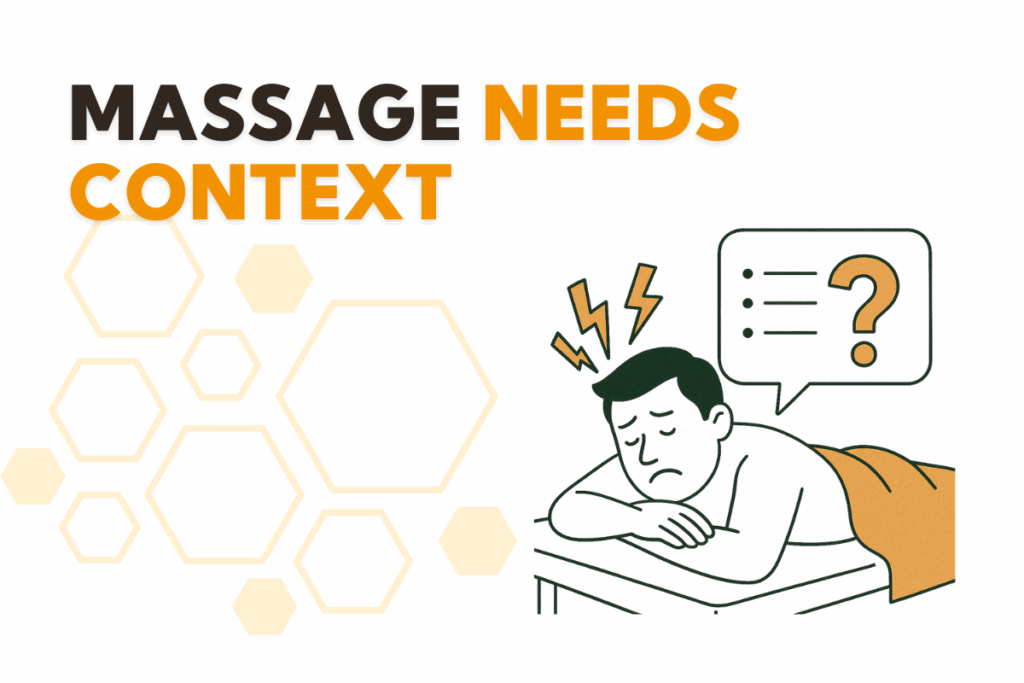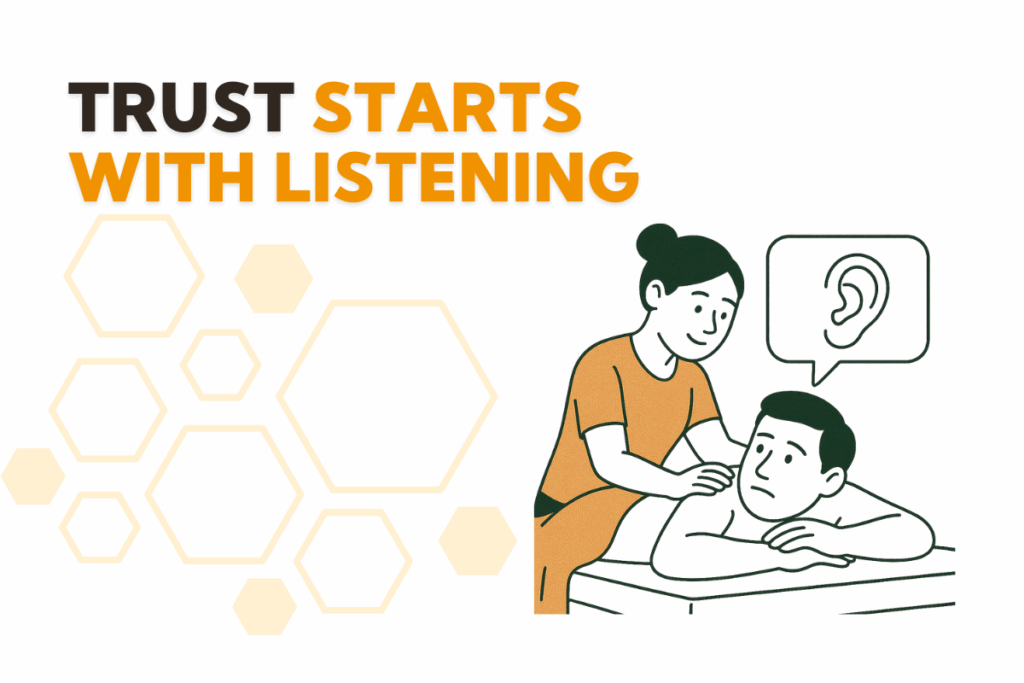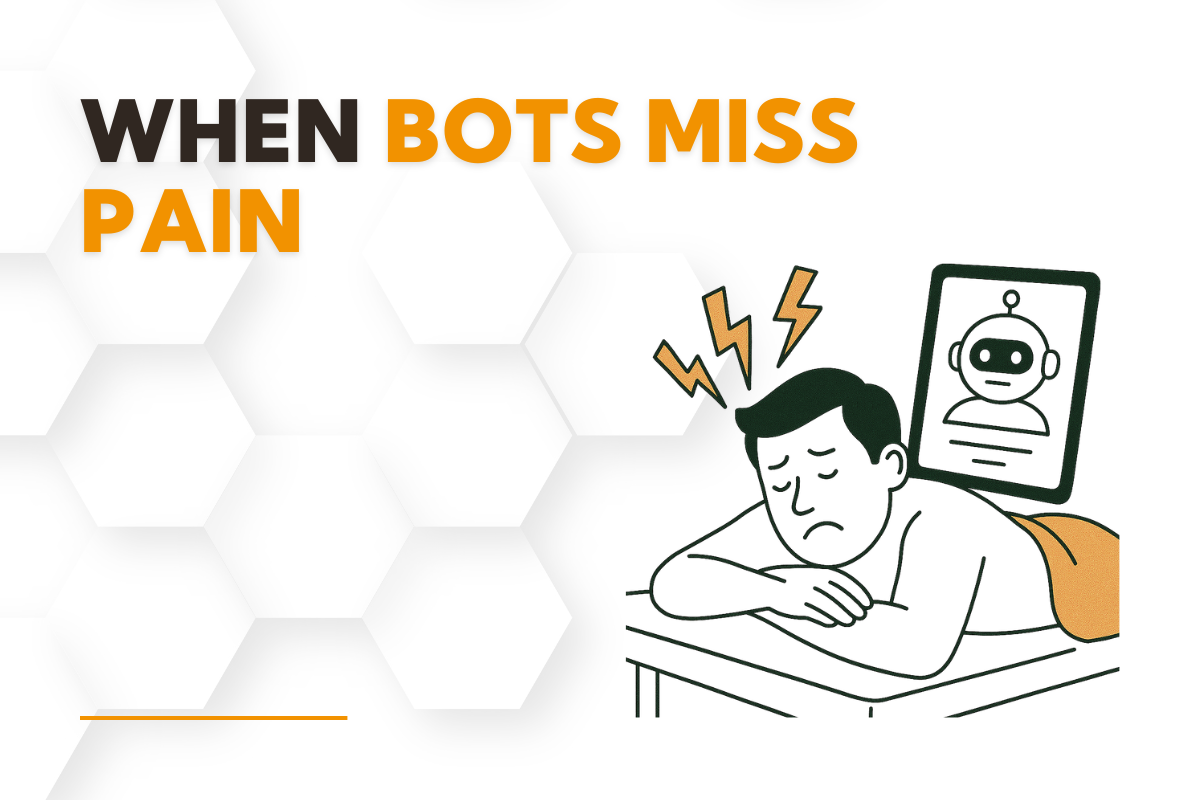Subheading:
When massage clients book through a chatbot, vital details like pain severity, recent surgeries, or special accommodations often go unnoticed—leaving therapists unprepared and clients underserved.
Booking Efficiency Shouldn’t Come at the Cost of Client Care
Chatbot pain severity issues are becoming more common in massage therapy clinics. A client might book a session through your website, mention they recently had neck surgery, and assume their therapist will know. But if a chatbot handled the intake, that critical detail could be buried or lost entirely.
This isn’t just a technical hiccup. It’s a serious gap in care. Automation is helpful for streamlining operations, but when it misses context like chatbot pain severity or requests to avoid certain positions, the therapist and client are left scrambling. And the damage to trust can be hard to repair.
Why Chatbots Struggle to Catch Critical Intake Context
They’re Not Trained for Clinical Nuance
Even the most advanced bots can’t interpret the way a human can. If someone writes, “My shoulder is still tender after surgery,” the chatbot may not flag that pain severity as significant. It takes a trained eye to recognize what’s important and follow up with clarity.
They Can’t Flag Risk or Escalate Urgency
Massage therapists depend on context like pain severity, range of motion issues, or post-op recovery timelines. Chatbots don’t understand these red flags. They can’t differentiate between a mild discomfort and a client at risk of injury without manual review.
Bots Break the Trust-Building Moment
Clients want to feel seen, especially when their health is involved. A missed chatbot pain severity signal or a misunderstood special request can make a client feel like their needs don’t matter. That’s not the impression any healing clinic wants to give.
When Context Is Missed, Everyone Feels It
Therapists Are Left Guessing
A therapist walks into the room expecting a simple back massage. But the client has fibromyalgia and recent surgery. The pain severity wasn’t flagged because the chatbot misread the intake. Now the session starts with confusion and concern rather than comfort.
Clinic Operations Take the Hit
Missed details around chatbot pain severity can lead to schedule changes, client dissatisfaction, and rebooked appointments that disrupt the day. Time and revenue are both impacted.
Clients May Not Return
If someone feels their health condition or special request wasn’t acknowledged, they’re unlikely to come back. Even a skilled massage can’t make up for being misunderstood at the start.

Blending Automation With Human Oversight
You don’t need to abandon automation. The key is recognizing that chatbot pain severity gaps are real and solvable—with a little human help.
Use Hybrid Intake Workflows
Let bots collect the basics, but always flag entries that mention things like “surgery,” “pregnancy,” or “chronic pain.” Human review ensures nothing critical is missed.
Use tools like online intake form with human review to keep your workflow smooth while still ensuring safety and awareness.
Write Questions That Invite Context
Ask:
- “What would you like your therapist to know?”
- “Do you have any areas of pain or sensitivity?”
- These invite better answers around pain severity, preferences, and concerns.
Train Staff to Catch What Bots Miss
Develop a clinic-wide reference list for terms that should be reviewed manually. Words like “injury,” “flare-up,” and “migraine” should never be left for automation alone to handle.
Help Therapists Show Up Prepared
Therapists shouldn’t be surprised in the treatment room. With tools like electronic charting and SOAP notes synced with intake, your team can enter each session informed, confident, and ready to support even the most complex client needs.
Understanding chatbot pain severity issues before the session allows therapists to adjust pressure, positioning, and goals—without scrambling mid-session.
Small Shifts That Make a Big Impact
- Audit your current chatbot process.
- Set up red-flag keywords that require manual review.
- Train your front desk and therapists to spot problems early.
- Update intake forms to be open-ended and clear.
- Collect client feedback to improve your system over time.

It’s Not Just About Tech—It’s About Trust
Chatbots can be a helpful tool, but they should never replace human insight. Massage is a personal, relational practice. When systems miss important context like pain severity or medical history, it’s not just a scheduling error—it’s a moment of disconnection.
By designing your clinic’s intake process with both automation and human care in mind, you can protect the therapist-client relationship and build a reputation for safety, compassion, and trust.
FAQs
A chatbot may miss signs of high pain severity, contraindications, or special accommodations. Without human oversight, sessions may be unsafe or misaligned.
Look for repeated issues: mismatched services, therapists surprised by client needs, or intake forms that skip over medical history.
Terms like “surgery,” “pain,” “pregnancy,” “fibromyalgia,” or “can’t lie flat” should always prompt a second look.
Start with short trainings and use real client examples. Show how catching a missed chatbot pain severity note can prevent discomfort—or worse.

